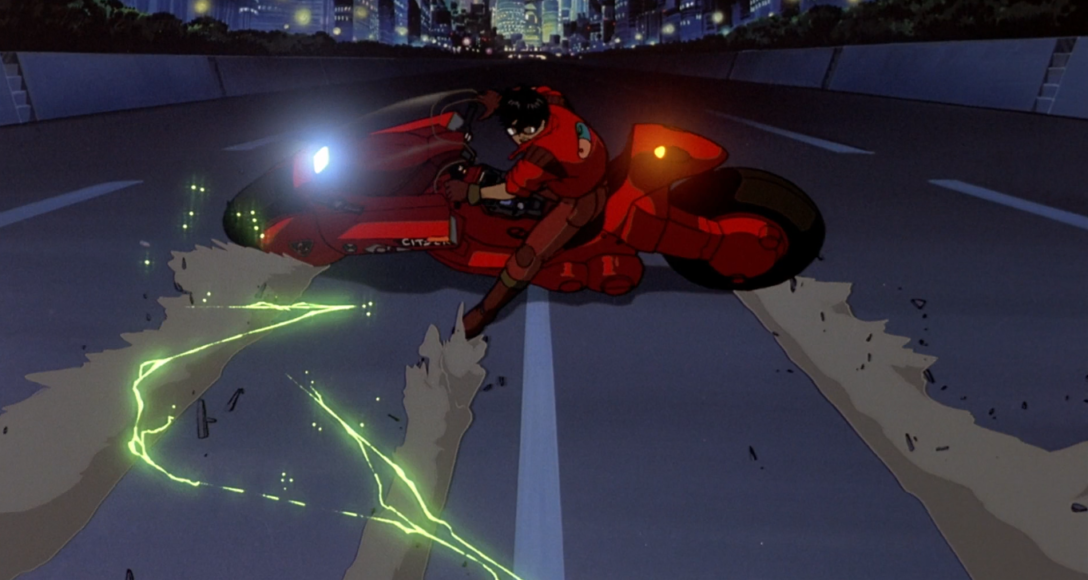Akira is a movie with an absolutely massive cult following. It’s another one of those films that for a long time I had only heard about, and because it was kind of hard to access (when I was younger, at least, before you could easily stream things online) it remained unseen and unknowable to me – like a trendy secret that I’d only seen stills from online.
Akira was originally released in Japan in 1988, and is based on the manga of the same name by Katsuhiro Otomo, who was actually not originally intending to develop the story for the screen but couldn’t pass up the opportunity when it was given to him. Otomo was also the director of the film which, at the time, was the most expensive anime film ever produced. And, because Otomo worked on both the manga and the film, the film remained incredibly close to his original vision for the story.
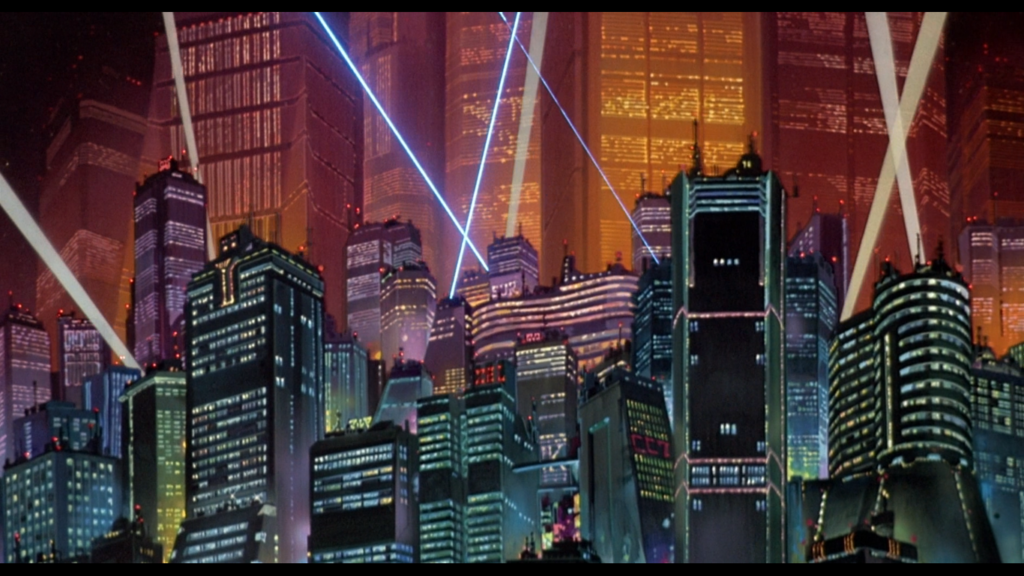
The film is an absolute legend of the cyberpunk genre, with the story including so many elements that have become hallmarks of the genre as we know it today: a rebuilt version of a destroyed city swimming in violence and corruption, scientific experimentation with often negative effects, massive technological advancements and, of course, some really, really cool motorcycles. The manga version of Akira was actually one of the works responsible for the conception of the Japanese-cyberpunk genre itself, and both the film and the manga have obviously been a major influence on many other notable cyberpunk works both in and outside of Japan, such as Elfen Lied, Battle Angel Alita, The Matrix and Dark City.
Now, full disclaimer here, but cyberpunk is by far my favourite genre of anything – book, film, TV show, video game, you name it, I love it. But I don’t love Akira just because its cyberpunk (although of course that is one of the reasons). I love it because there are just so many things to love about it, from the story to the animation to the score.

I’ll start with the story. After being destroyed in 1988 by an unknown explosion, Tokyo is rebuilt into the fabulously futuristic Neo-Tokyo, and by 2019 the city is full of violence, terrorism and corruption. The initial action of the plot unfolds against a backdrop of student protesters, all demanding that the government repeal their poorly-implemented tax reforms, as many citizens are now out of work. Starting their journey out in a grimy underground bar, we are quickly introduced to Shotaro Kaneda, the film’s protagonist, his best friend Tetsuo Shima and their other friends, who are all part of a bosozuko gang (a Japanese subculture built around customised motorbike). Within minutes of the film beginning the group have gotten into a fight with a rival gang. This fight leads to a thrillingly-paced motorbike chase which in turn causes Kaneda and his friends to come into contact with Takashi, a strange-looking child who is running from something or someone unknown. Tetsuo accidentally crashes his bike into Takashi, and this results in Tetsuo’s latent psychic powers being unleashed, to horrifying effect.
There are many reasons why the story of Akira is so brilliant – because it’s interesting, because it’s innovative, because it’s almost perfectly paced. It’s also because it’s not just the story of one thing. It’s the story of a city on the brink of destruction and at the same time it’s also a more personal story, the story of a friendship that is quickly dissolving, and the story of an abandoned child desperate to prove themselves.
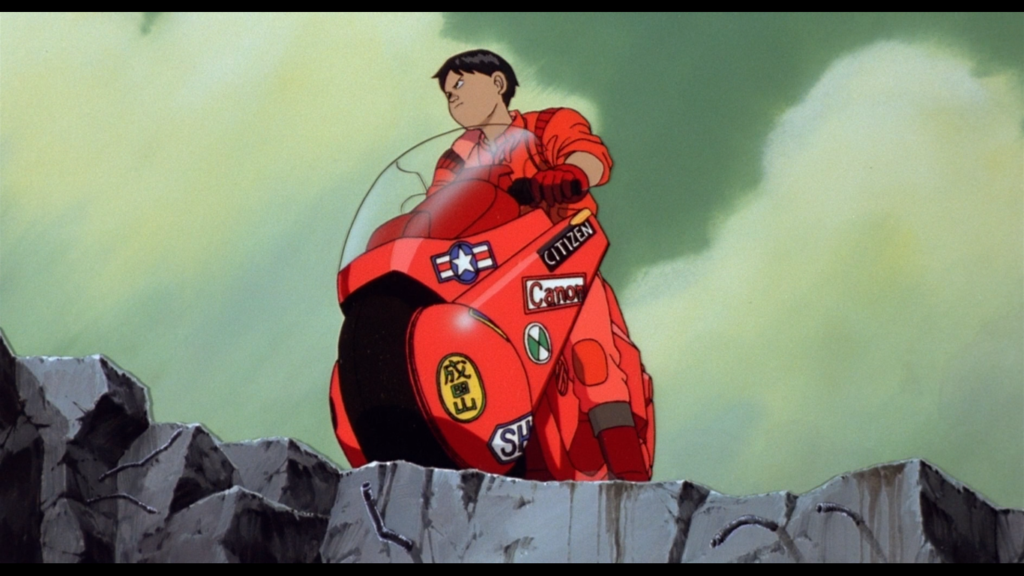
Neo-Tokyo is going to be destroyed again in the same way as the original Tokyo unless a secretive government organisation can prevent it, but even if this never occurred, the city would likely just implode because of all of the civil unrest caused by the government’s unwillingness to do anything that doesn’t involve using violence to deal with the city’s problems. What makes this story so engaging is that the problems Neo-Tokyo faces are the problems that so many cities around the world faced both back then and today: job insecurity, rampant crime, a government unwilling to listen. There are many elements of Neo-Tokyo that are pure fantasy, but its citizens’ struggles are surely not. They are the struggles that we face today.
And then there is poor Tetsuo. Whilst he is undeniably the villain of the piece, he is also undeniably a tragic one. It is clear that Tetsuo is the “runt” of his group – he’s not as good at motorbike riding as the others, he’s nowhere near as good in a fight, and he lacks the confidence that fuels Kaneda’s swagger. Tetsuo has struggled his whole life under Kaneda’s shadow, and it is this struggle for confidence, this desire to stand on his own two feet and not need to be rescued all the time that helps to spur on his physical transformation and rapid descent into madness. This human element makes Tetsuo a much more engaging villian; there are countless tales of once-innocent characters undergoing some sort of transformation that makes them evil, but rarely do they have a human aspect to them that prevents them from just turning into a cartoon.
I think also that the sympathy that is generated for Tetsuo is in part due to the fantastic voice acting (I’m talking specifically about the original Japanese voice acting, as I’ve only seen the film subbed, not dubbed). I remember the first time I watched Akira and feeling actually horrified at Tetsuo’s screams during the mutation sequences, because they seemed to be filled with so much pain, they seemed so real and I couldn’t imagine suffering a worse fate than his.
The story of Akira is that of a true classic: one that is timeless and that everyone can understand and identify with. The social issues presented in the film are more relevant than ever, and although everyone watching perhaps has not dealt with the same struggle for confidence as Tetsuo, they can still sympathise with his need to assert himself and step out from behind others.
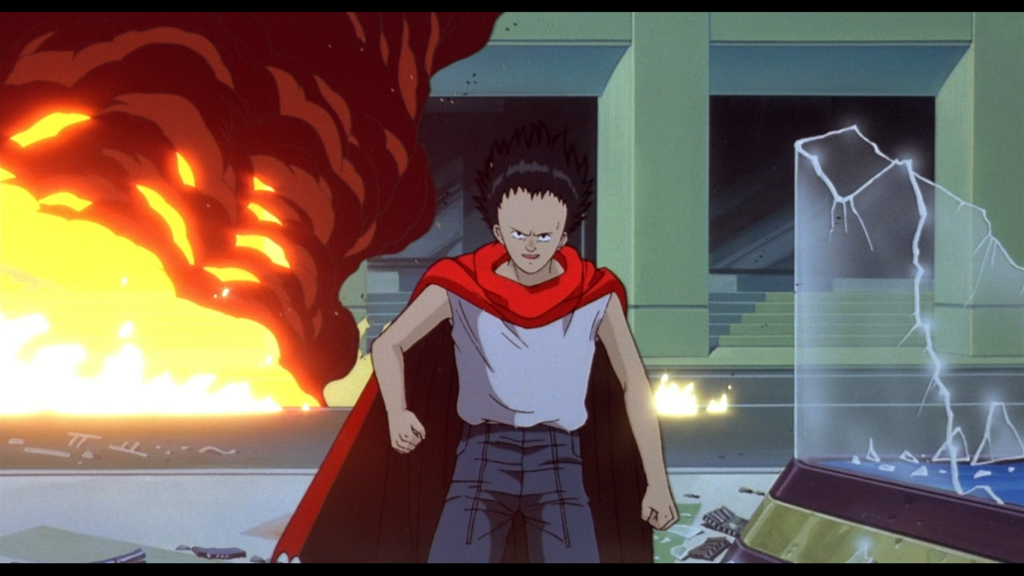
Akira doesn’t just have a fantastic story; it looks and sounds amazing too. Overall the film is a work of art, an experience you should try and have on the biggest screen possible to lend justice to the quality of the animation and the score. I was recently fortunate enough to attend a cinema screening of the film and that is without a doubt the definitive way to watch it. Every sound, every detail was amplified a hundred-fold by seeing it on such a big scale. It elevates it all from simply “watching a film” to “experiencing” it. When I watch films to write reviews, I usually watch them on my laptop with half of the screen dedicated to the film and half of the screen with Word open so I can take notes, and I almost didn’t want to do that this time because I didn’t want to watch something so amazingly beautiful on such a small screen.
As I mentioned before, at the time of its creation Akira was the most expensive anime film ever made, with that amount of money really allowing the animation to shine. Everything has an amazing richness of detail to it – colours are vibrant, backgrounds are almost impossibly intricate. The city of Neo-Tokyo is fleshed out to a level akin to Blade Runner’s vision of 2019 Los Angeles, with that grimy underbelly of lawlessness that characterizes all cyberpunk cities. There are skirmishes between protesters and police, leading to massive casualties, there is smoking wreckage everywhere. I absolutely love world-building like this – cities that look lived in, places with a million lives beyond those of the protagonists, with stories that will continue after the main action of the film is all said and done. The fight scenes are often horrifically violent, as are the sequences where Tetsuo is mutating. But the animation of the film somehow makes all of this beautiful. Somehow, even when you’re looking at something inherently awful, you just can’t help but admire the technical skill that went into creating it all by hand.
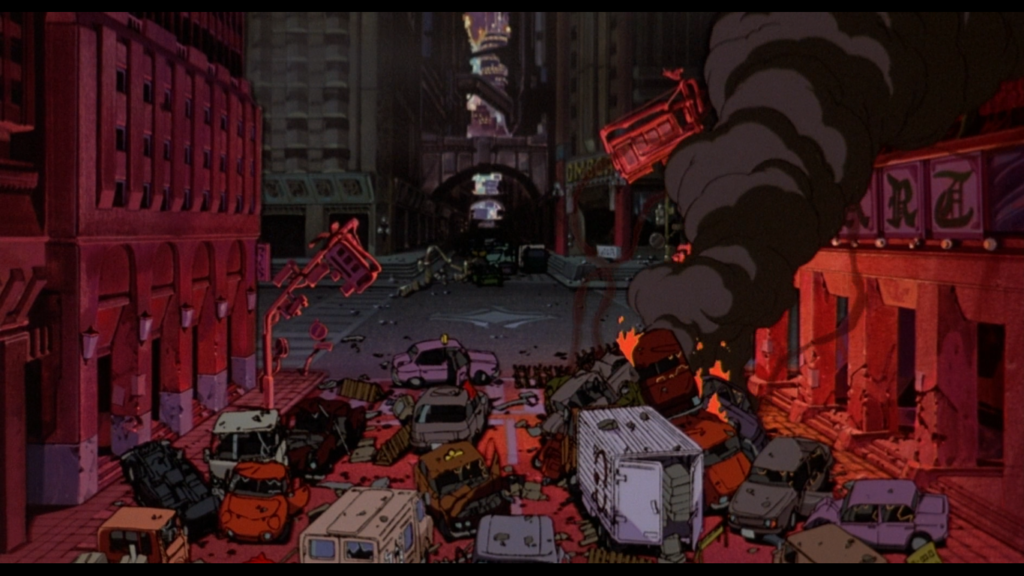
Then there is the score of Akira, which subverts the typical “cyberpunk-synth” route. There’s nothing wrong with synth in a futuristic work if it’s done well, like Vangelis’ classic score for Blade Runner, but I do think it borders on cliché now. Ghost in the Shell is quite similar in its use of a subversive score, one which often relies less on actual instruments and more on just sounds. For example the score of Akira is often nothing more than this horrible industrial wheezing sound, but it works. When the score does contain instruments they are not the kind you would expect for something set in a ruined futuristic city. Inspired heavily by gamelan music from Indonesia and noh music from Japan, Akira’s composer, Shoji Yamashiro, has created a score that feels strange, otherwordly and does an excellent job of putting you on edge as you are watching.
So, most importantly, should you watch Akira? Of course. Absolutely. Without a doubt. There is a reason why this movie has such a large and endearing cult following, and there’s a reason why it keeps finding itself on endless “Best Films Of All Time” lists – because it really is one of the best films of all time. I would say without hesitation that if you have even a passing interest in film, Akira should be mandatory viewing for you. It doesn’t matter if you’ve no interest in anime – you don’t need to know anything about the medium to enjoy this film. Akira is violent, terrifying, sobering and, most of all, beautiful. As I mentioned before, Akira really is a work of art.
BEST BITS
– The level of detail that the animators put into the film. One thing that still stands out to me as amazing is during the motorcycle chase at the start of the film the animators included the draglines of the motorcycle lights.
– The score can be as effective when it isn’t present as when it is. At the start of the film there is nothing but silence and the slightest sound of the wind blowing before the sudden and all-encompassing explosion.
WORST BITS
– A bit more backstory to the Espers would have made their character arc more affecting.
– It can be a bit difficult trying to understand what exactly causes Akira and the other esper’s powers the first time you watch the film. I don’t know if this is due to a bit of awkward translation or if it’s just genuinely a convoluted explanation.
FINAL RATING: 9/10
More like this: 10 Sci-Fi Films You Need to See Before You Kick Off This Mortal Coil
